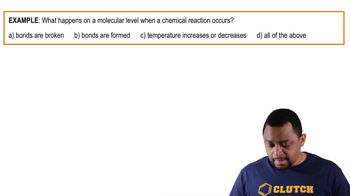Textbook Question
The following formulas are unlikely to be correct. What is wrong with each?
d. C2OS
 Verified step by step guidance
Verified step by step guidance Verified video answer for a similar problem:
Verified video answer for a similar problem:



 3:16m
3:16mMaster Bonding Preferences Concept 1 with a bite sized video explanation from Jules
Start learning